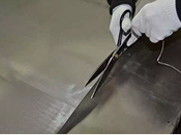Jul . 29, 2024 23:11 Back to list
CE Certification for Steel Mesh Screens Ensuring Quality and Compliance in Construction and Industry Applications
CE Certification for Steel Mesh Screens Ensuring Quality and Safety
CE certification is a crucial aspect of product compliance in the European market, particularly for construction materials and safety equipment. Among these products are steel mesh screens, which are widely used in construction, filtration, and various industrial applications. This article explores the importance of CE certification for steel mesh screens, the process involved, and the benefits it brings to manufacturers and consumers alike.
Understanding CE Certification
CE marking indicates that a product complies with European Union (EU) standards for health, safety, and environmental protection. The certification process involves rigorous assessment and testing of products to ensure they meet the necessary directives. For steel mesh screens, this often includes compliance with the Construction Products Regulation (CPR) and other relevant standards that govern the manufacturing and performance of construction materials.
The Importance of Steel Mesh Screens
Steel mesh screens serve multiple purposes, ranging from providing security and safety in construction sites to filtering materials in various industrial processes. They can be used in fencing, scaffolding, and as part of machinery in mining and recycling. The reliability and strength of steel mesh screens are paramount; hence, ensuring that they meet stringent quality and safety standards through CE certification is critical.
The CE Certification Process
The path to obtaining CE certification for steel mesh screens typically involves several steps
1. Product Assessment Manufacturers must first assess their product against the relevant harmonized European standards. This might involve testing the physical properties of the steel, the mesh size, and the overall construction integrity.
2. Documentation Complete technical documentation must be compiled, demonstrating compliance with EU standards. This documentation includes product specifications, design calculations, and details of the manufacturing process.
ce certification steel mesh screen

3. Testing and Inspection Independent testing organizations, or Notified Bodies, will conduct performance tests on the steel mesh screens. This testing evaluates factors such as strength, durability, and resistance to corrosion.
4. Quality Control System Manufacturers must also establish a quality control system that meets the requirements of the certification process. Continuous monitoring and testing are essential to ensure ongoing compliance.
5. Issuance of CE Mark Once all requirements are met, the Notified Body issues a Declaration of Conformity, allowing the manufacturer to place the CE mark on their products.
Benefits of CE Certification
CE certification provides numerous advantages for manufacturers of steel mesh screens. Firstly, it opens doors to the European market, enhancing marketability and competitiveness. Products with CE marking are viewed more favorably by consumers, as it signifies adherence to rigorous safety and quality standards.
Moreover, CE certification can also reduce the risk of liability claims. By demonstrating compliance with established regulations, manufacturers can protect themselves from potential lawsuits related to safety failures or product performance.
For consumers and businesses purchasing steel mesh screens, CE certification means assurance and peace of mind. It indicates that the product has been evaluated and deemed safe for use, aligning with industry standards for quality and safety. This can be a deciding factor for contractors and builders when selecting materials for their projects.
Conclusion
In conclusion, CE certification for steel mesh screens represents more than just a regulatory requirement; it is a mark of quality and safety assurance. The certification process not only enhances the credibility of manufacturers but also protects end-users by ensuring that they are getting reliable and safe products. As the demand for high-quality construction materials continues to rise, CE certification will remain an essential element in the manufacturing and distribution of steel mesh screens in the European market and beyond.
share
-
CE Certified Woven Wire Mesh Filters | Premium Filtration Solutions
NewsAug.19,2025
-
High-Performance Particle Filters: Optimal Mediums & Applications
NewsAug.18,2025
-
Competitive Screen Mesh Price | 1/4", 1/8", 1/2" Wire Mesh Screens
NewsAug.17,2025
-
CE Certified 250 Micron SS Mesh: Precision & Durability
NewsAug.15,2025
-
CE Certified 250 Micron Stainless Steel Mesh - Durable & Precise
NewsAug.14,2025
-
Precision CE Certified 250 Micron Stainless Steel Mesh
NewsAug.13,2025

